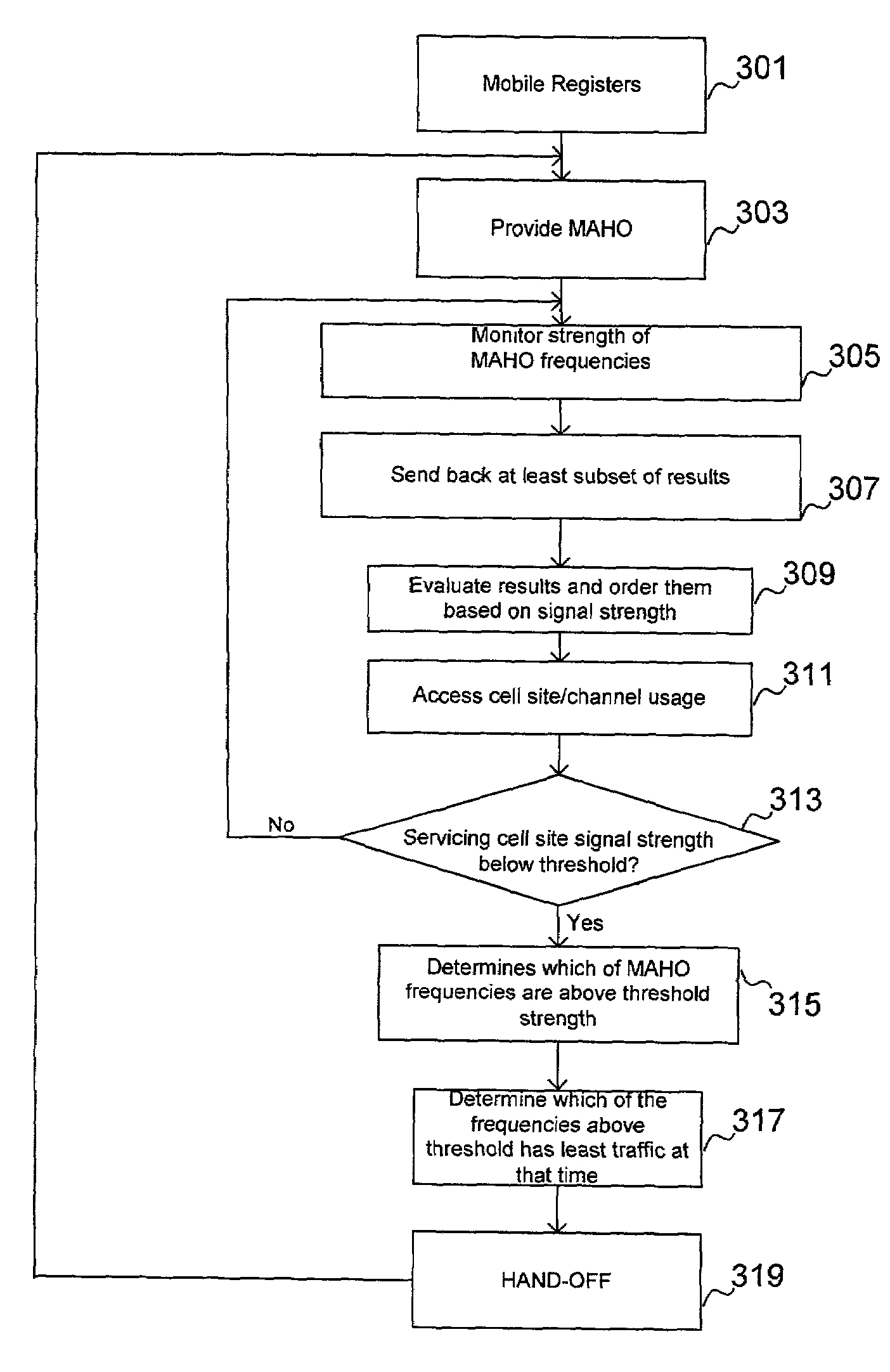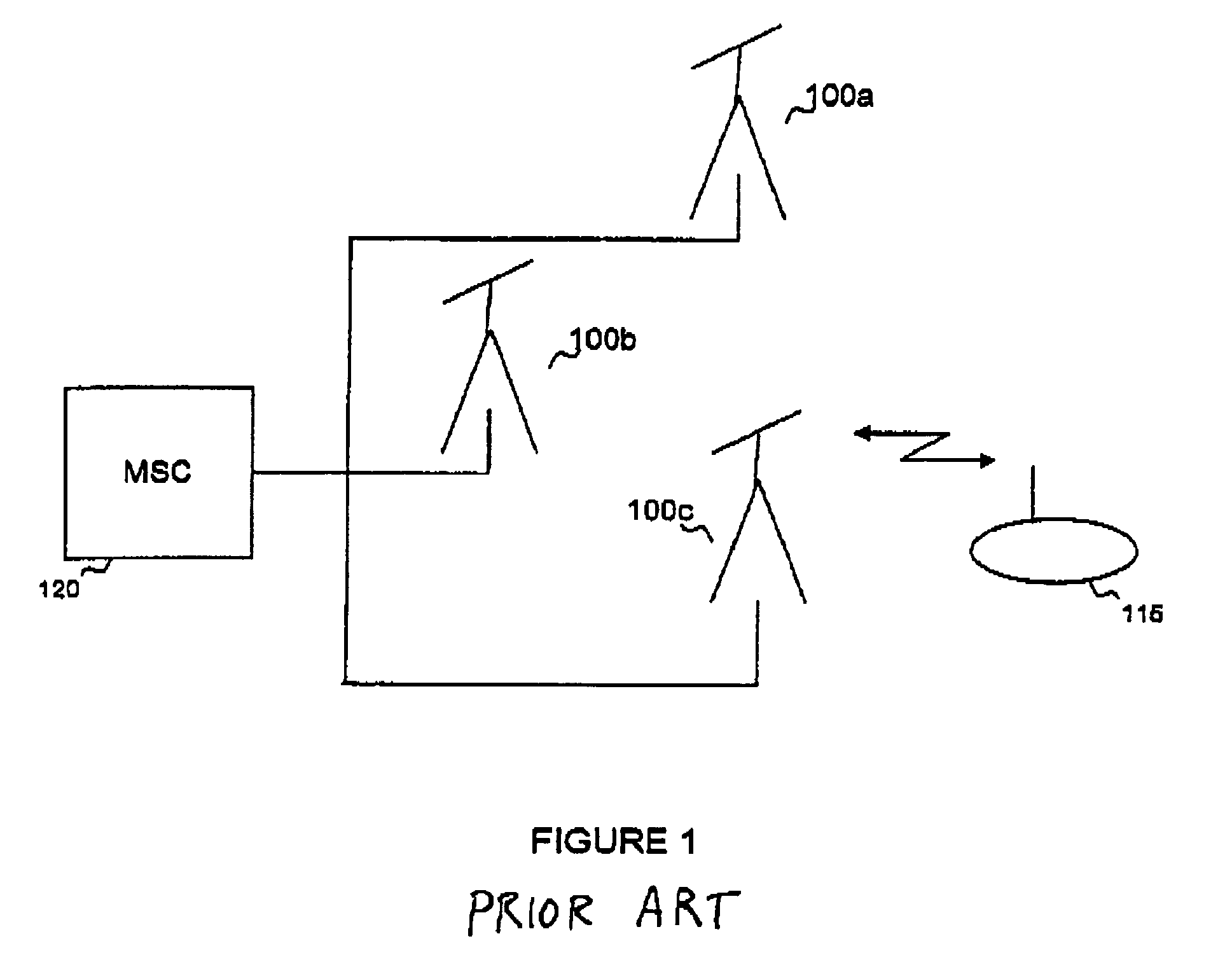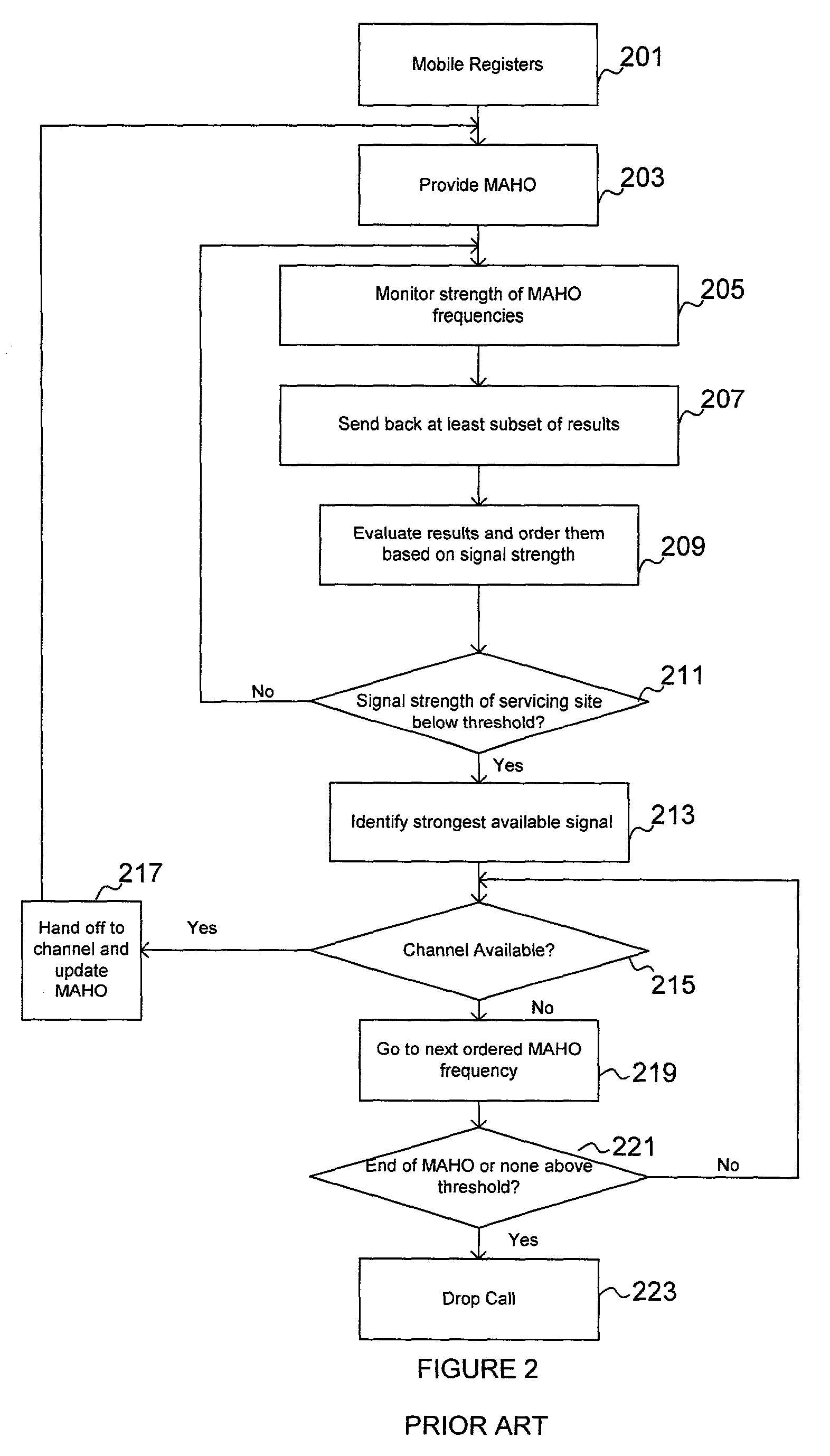Cellular handoff based on traffic load sharing
a technology of traffic load and handoff, applied in the field of cellular telephone system call management, can solve the problems of unfavorable “pile-up” of selected cell sites, and achieve the effect of improving the efficiency of msc operations and uniform distribution of cellular traffi
- Summary
- Abstract
- Description
- Claims
- Application Information
AI Technical Summary
Benefits of technology
Problems solved by technology
Method used
Image
Examples
Embodiment Construction
[0021]FIG. 3 illustrates an exemplary method of practicing the principles of the present invention in which criteria other than only signal strength are used to identify neighbor cell site handoff candidates. That is, instead of basing a handoff decision solely on greatest signal strength, as is the practice in the prior art, selection of a cell site for handoff in accordance with the present invention is preferably also based on data representative of load sharing or traffic sharing. In the preferred embodiment of the present invention, MSC 120 preferably evaluates the signal strengths of the cell sites in the MAHO list not only with respect to which ones are higher than the others, but also with respect to which of the cell sites in the MAHO list are above a minimum threshold to support communication with the mobile device in question. The MSC then preferably also determines which of those cell sites is currently servicing the least amount of traffic and / or is most likely to be in...
PUM
 Login to View More
Login to View More Abstract
Description
Claims
Application Information
 Login to View More
Login to View More - R&D
- Intellectual Property
- Life Sciences
- Materials
- Tech Scout
- Unparalleled Data Quality
- Higher Quality Content
- 60% Fewer Hallucinations
Browse by: Latest US Patents, China's latest patents, Technical Efficacy Thesaurus, Application Domain, Technology Topic, Popular Technical Reports.
© 2025 PatSnap. All rights reserved.Legal|Privacy policy|Modern Slavery Act Transparency Statement|Sitemap|About US| Contact US: help@patsnap.com



